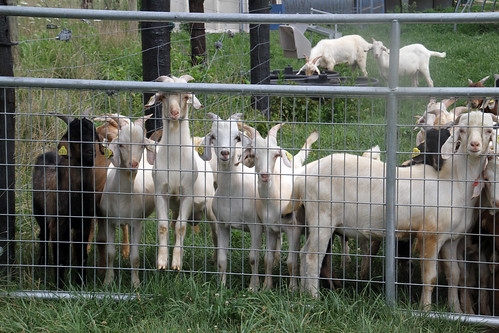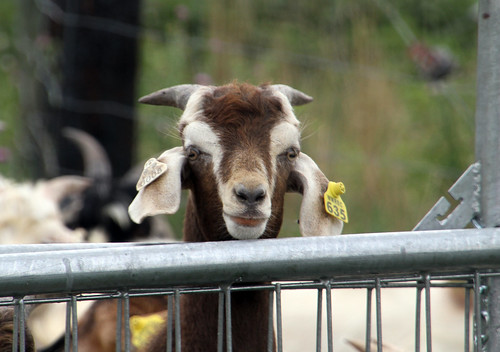Fecal egg counts for the July 23rd collection ranged from 0 to 19600 epg and averaged 2100 ± 2975 epg. The median egg count was 1125 epg. This is a significant increase from two weeks prior (July 7) when egg counts averaged 776 epg.
The standard deviation was also significantly higher, indicating a wider variation in egg counts: 2957 vs. 1340. The median was also significantly higher, indicating more goats with high egg counts: 1125 vs. 129.
Forty-eight (50%) goats had fecal egg counts above 1000 epg. Thirty (31%) goats had fecal egg counts above 2000 epg. Eleven (11%) goats had fecal egg counts above 5000 epg.
While the paddocks planted in annual forages shouldn't be a significant source of parasite infection (L3 larvae), the goats have continuous access to the central laneway, which contains short grass. They have also had access to the silvopasture which is planted mostly in MaxQ™ tall fescue.
In addition to individual fecal samples, a pooled fecal sample will be collected on August 3. It will be submitted to the University of Georgia for a DrenchRite® test. The DrenchRite® test is a laboratory test that determines resistance to all anthelmintics (dewormers) simultaneously. Other pooled samples are submitted to Virginia State University for larave ID. Virginia State University also does individual fecal egg counts for the test.
As a safeguard against anthelmintic resistance, any goat that requires deworming will be treated with levamisole (Prohibit®), plus copper oxide wire particles (COWPs).
Download July 23 Fecal Egg Count Report
The standard deviation was also significantly higher, indicating a wider variation in egg counts: 2957 vs. 1340. The median was also significantly higher, indicating more goats with high egg counts: 1125 vs. 129.
 |
| Which goats have high egg counts? You can't tell by looking |
Forty-eight (50%) goats had fecal egg counts above 1000 epg. Thirty (31%) goats had fecal egg counts above 2000 epg. Eleven (11%) goats had fecal egg counts above 5000 epg.
While the paddocks planted in annual forages shouldn't be a significant source of parasite infection (L3 larvae), the goats have continuous access to the central laneway, which contains short grass. They have also had access to the silvopasture which is planted mostly in MaxQ™ tall fescue.
In addition to individual fecal samples, a pooled fecal sample will be collected on August 3. It will be submitted to the University of Georgia for a DrenchRite® test. The DrenchRite® test is a laboratory test that determines resistance to all anthelmintics (dewormers) simultaneously. Other pooled samples are submitted to Virginia State University for larave ID. Virginia State University also does individual fecal egg counts for the test.
 |
| On July 23, 635 had a FEC of only 100 epg |
As a safeguard against anthelmintic resistance, any goat that requires deworming will be treated with levamisole (Prohibit®), plus copper oxide wire particles (COWPs).
Download July 23 Fecal Egg Count Report











